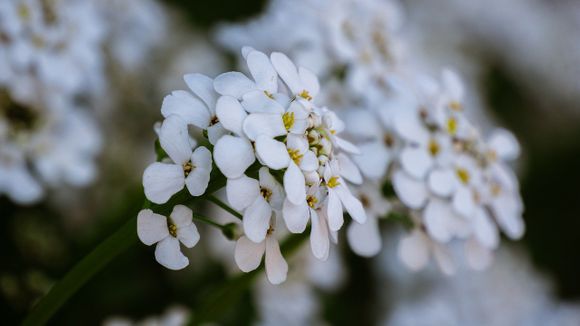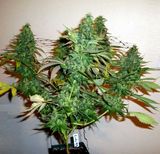Author: Elena Marinova, Master of Pharmacy
You feel pain and burning in your stomach, or maybe you are constantly bloated? This sounds exactly like an advertisement, but in fact these are symptoms that you should not ignore! Some people have only heard about them on TV, but most of us have encountered them first-person. These symptoms signal gastrointestinal diseases, for which we very often seek help from nature.
What are Functional Gastrointestinal Disorders
According to a large-scale multinational study, 40% of people worldwide suffer from functional gastrointestinal disorders, which are more common in women than in men. [ref.1] These are a group of diseases that manifest themselves with changing chronic or recurrent symptoms - bloated stomach, pain, reflux, burning.
Such diseases are gastroesophageal reflux disease, irritable bowel syndrome, functional dyspepsia, constipation, etc. You can read more about them in other articles on our website ( and ).
- Indigestion (dyspepsia) - causes, symptoms and treatment
- 7 herbs that relieve indigestion and dyspepsia
Characteristic of these conditions is that structural or biochemical disorders are not observed, the symptoms are often unclear and difficult to locate. Many factors such as stress, genetic predisposition, disorders in the motility of the gastrointestinal tract, altered function of the immune system, can affect clinical manifestation, but still the pathophysiology of these diseases is not fully understood. [ref.2]
It is clear that these diseases deteriorate people's quality of life and require great effort from both doctors and patients.

Can You Manage This on Your Own?
In most cases, a doctor is consulted, but there are many ways that help relieve unpleasant symptoms and improve the general condition.
- Diet - building and adhering to an appropriate diet is of utmost importance.
- Sports and physical activity – physical exercises can be both useful and harmful to the gastrointestinal tract. Mild to moderately heavy exercises play a protective role in constipation, colorectal cancer, cholelithiasis (gallstone disease or more simply: gallstones). Very heavy exercise can lead to nausea, vomiting, pain. [ref. 3]
- Stress - stress can unlock or intensify the symptoms that occur with irritable bowel syndrome. This is due to the connection between the central nervous system and the nerves of the intestine.
- Herbal treatment - the advantage of herbs is that they have a complex mechanism of action, which allows simultaneous management of symptomatology and removal of the cause of the condition. In addition, fewer side effects are available due to proving their safety over a long period of time.

For some herbs, scientific studies have been carried out to demonstrate their effectiveness in functional gastrointestinal disorders, with the following 9 herbs entering the composition of a plant medicinal product for which preclinical studies and clinical trials have been conducted. The product can not be prepared at home, due to the fact that some of the plants are toxic in larger doses.
Wild Candytuft (Iberis amara)
Wild candytuft is also called rocket candytuft and bitter candytuft, and has been known since ancient times - the Greek doctor Gallen treated an Iberian patient with the flowers of the plant. In the late Middle Ages, Iberis found use to treat cramps and as an anti-inflammatory agent in the form of tonic drinks and wine.
The wild candytuft (Iberis amara) has a sweet smell, but a bitter taste, thus its name - in Latin: amarus - "bitter". The genus name (Iberis) is Greek and means "Cresson", but is also associated with the ancient Roman name of Spain - Iberia.
The plant is common in Europe and especially on the rocky shores of the Mediterranean Sea. Contains amines, cucurbitacin, flavonglycosides. A stalk of the plant is used for treatment. In vitro and in vivo pharmacological studies have shown that extract from the fresh plant has a tonic effect on the smooth muscles of the stomach and small intestine.
A dose-dependent anti-ulcer effect has been proven. Toxicological studies show that fresh plant extract has no cytotoxic effect when used in therapeutic doses. [ref.4 ]

Peppermint (Mentha piperita)
Peppermint is a hybrid between two types - water mint (Mentha aquatica) and spearmint (Mentha spicata). The leaves of the plant are used. They contain essential oils – mainly menthol, menthon and piperiton.
Peppermint oil (Oleum menthae) is obtained by water vapor distillation of a wilted aboveground part of the plant and is a colorless or slightly yellowish liquid with a characteristic minty smell. It has antispasmodic, carminative, antiseptic and sedative (calming) effect, thanks to which it is used in gastrointestinal complaints, menstrual pains, skin irritations.
There is a legend that in the underworld of the River Kokytos a water nymph named Minta lived, which seduced the god Hades. To get revenge, the Queen of the Underworld (Persephone) turned her into a plant that is now known as peppermint.
Lemon Balm (Melissa officinalis)
Lemon balm is a perennial herbaceous plant. For healing purposes, the leaves – Melissae folium, are used. It contains essential oils (citral, citronellol, geraniol), triterpenes and phenolic acids. It has antispasmodic, carminative, sedative and hypotensive effect.
In the Middle Ages, monks prepared decoctions and wine from the leaves of the lemon balm mainly as a means of aiding digestion. Due to the numerous healing effects of the lemon balm, it had to be grown by decree of Charlemagne in every monastic garden in Europe. At that time, lemon balm essential oil was called "liquid gold" because of its high price.

Garden Angelica (Angelica archangelica)
Garden angelica is also known as wild celery and Norwegian angelica. There is a legend that tells that the plant was brought to Earth by Archangel Raphael, hence the name (Angelica archangelica). For a long time, people thought that it healed everything - a mystical panacea.
Unfortunately, the garden angelica can not be applied to all diseases, but the healing properties of the herb are not few. The root of the plant containing furanocoumarins (angelicin, isobergapten) is used – it has a diuretic, antispasmodic, anti-inflammatory effect and regulates the production of hydrochloric acid in the stomach. The root extract of the plant has a relaxing effect on the upper part of the stomach and tones the muscles in its lower part, which relieves the symptoms of bloated stomach, pain, heaviness.
It is important to know that furanocoumarins are toxic - they penetrate the skin, and under the influence of UV light they interact with DNA in the nuclei of epithelial cells, forming strong bonds. That's how the cells die. The result is serious skin inflammation – phytophotodermatitis.
Caraway (Carum carvi)
The fruits of the plant (Carvi fructus) are used – the fruits are light brown with a characteristic smell, collected before they are fully ripe. They contain essential oils (carvone, limonene, geraniol), flavonols (quercetin, kaempferol), proteins, coumarins. It has antispasmodic, carminative and revulsive (causes redness and warming) action.
The caraway finds widespread application as a spice. It originates in the Middle East, Europe and North Africa. It is officially recognized by the European Scientific Cooperative in Phytotherapy as a means of alleviating stomach complaints and flatulence in children suffering from colic.

Greater Celandine (Chelidonium majus)
Greater celandine has also been known since ancient times. It was known as Devil's Milk because of the milky juice, which contains the active substances. The above-ground part of the plant is used.
It contains the alkaloids chelidonine, sanguinarine, chelerythrin, berberine, isolated from orange milky juice. The antispasmodic action is due to chelidonine and is stronger than the action of papaverine. Alkaloids are highly poisonous substances! It is interesting that the herb also has an antioxidant effect, and the milky juice is used externally to treat warts.
Chamomile (Chamomilla recutita)
Chamomile has been a well-known and widely used herb since ancient times. The flowers of the plant are used, which contain essential oils, flavonoids, coumarins. Chamomile oil (Chamomile oleum) is obtained by water vapour distillation and contains sesquiterpenes and polyins, which have antispasmodic and anti-inflammatory action. Thanks to these properties chamomile finds widespread application.
It is used in:
- stomach pain and other manifestations of gastrointestinal discomfort - besides its antispasmodic action, chamomile also reduces the production of hydrochloric acid.
- skin irritations - enters the composition of many creams and other dermatic products.
- sore throat and other inflammations of the upper respiratory tract.
- sores and gingivitis - used in the form of mouthwash.
Chamomile is widespread and easily accessible and you can easily prepare chamomile tea at home.

Milk Thistle (Silybum marianum)
Initially, the milk thistle was found mainly in rocky mountains in the Mediterranean, but later spread throughout the world. According to the legend, the name of the plant is derived from the color of the leaves - it is considered marked by the milk of Virgin Mary.
Milk thistle was used in antiquity as a vegetable, using all its parts in a raw or boiled state. Due to its delicious fruits and prickly colors, it is called "wild artichokes".
It is the fruits of the plant that are used later and for healing purposes. It contains flavolignan complex - silymarin, which has hepatoprotective (protects the liver) and antispasmodic action. Due to these healing properties, milk thistle is used in liver diseases such as hepatitis and cirrhosis and in problems with the gallbladder.
Liquorice (Glycyrrhiza glabra)
The name of the plant comes from the fact that its roots have a sweet taste - from Greek: glycos - "sweet", rhiza - "root". The herb was used is Ancient Egypt, where it was believed that pharaohs could prepare a sweet drink "mai sus" in the afterlife. The root of the plant is used. It contains flavonoids (liquidin), to which antispasmodic action is due. Triterpene saponones in drugs determine the expectoaching effect and application in inflammation of the upper respiratory tract, accompanied by a productive cough.
Nature provides us with many other herbs to help us fight functional disorders of the gastrointestinal tract, but we should always be careful when using them, especially if it is at home.








